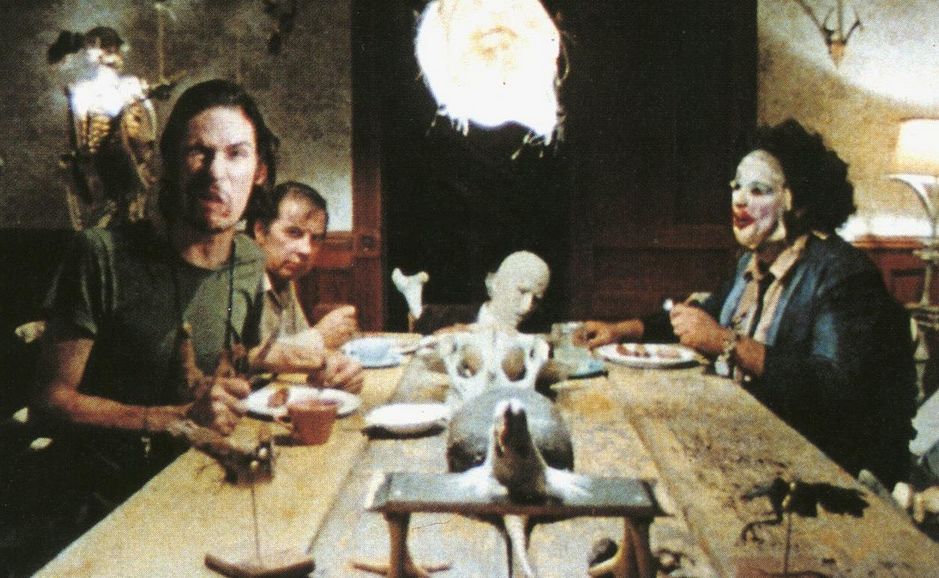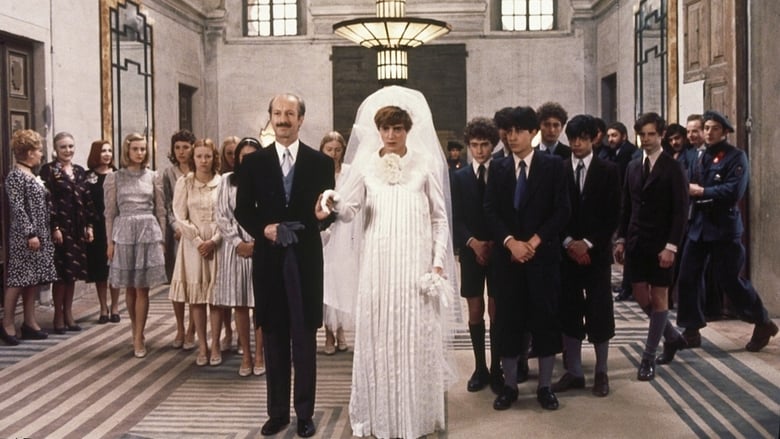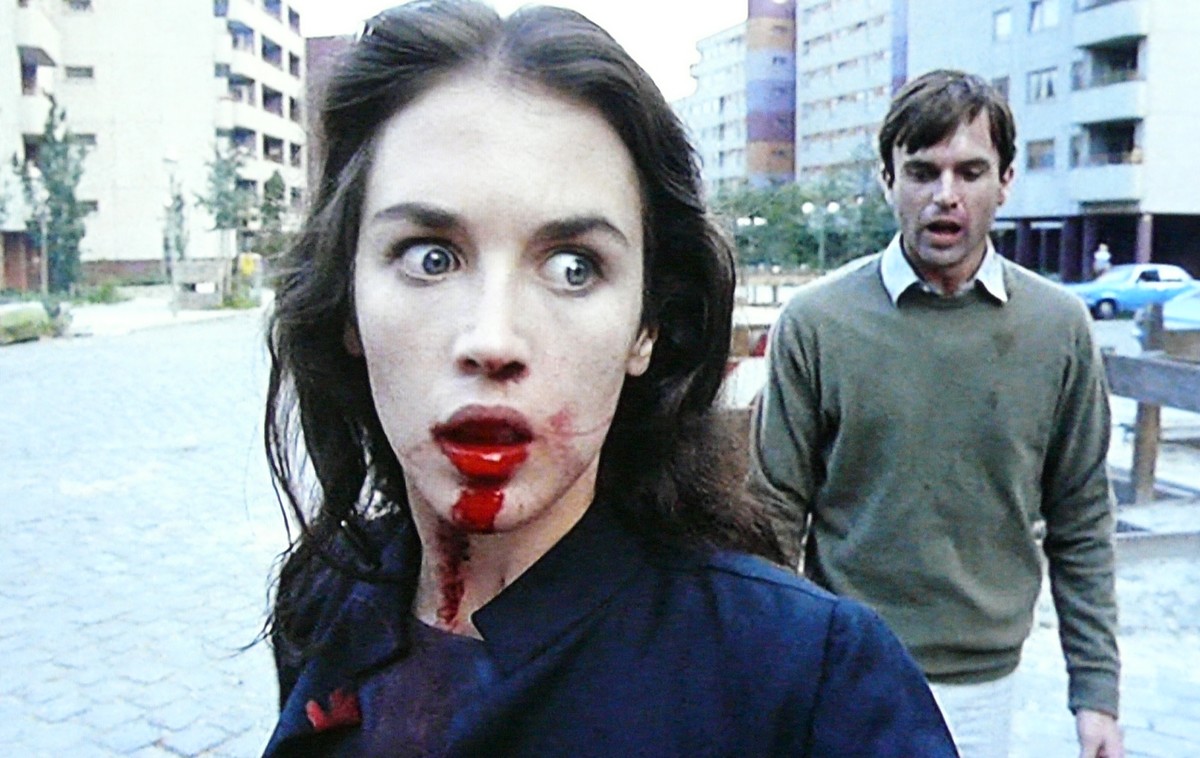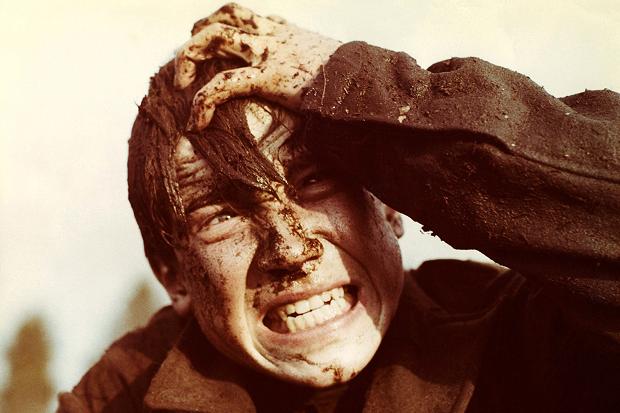5. Under the Skin (Jonathan Glazer, 2013)

Science fiction likes to showcase ideas that explore human ambition, technological advancements and worlds that exist far beyond what scientists believe is possible. One of the most common Sci-Fi tropes is that of aliens coming to earth and humans having to deal with them, and it has never been so lethal than in Jonathan Glazer’s Under the Skin. This film is about a life-form from another planet, who disguises itself as a beautiful woman (Scarlett Johansson) in order to lure unsuspecting men back to their makeshift home so that it can harvest their insides.
Featuring a standout performance by Johansson, the film functions in a very passive way and offers little to no explanations for why this lifeform is on earth and the purpose of whatever “mission” it has. The viewer is forced to make their own conclusions about what is happening as the alien moves from victim to victim and to pass judgement on how it interreacts with our species. The creature Johansson plays functions more like an apex predator that has evolved past what the human race hopes it can defend itself against.
With its calculated camerawork along with an ominous score by Mica Levi, Under the Skin creates an absorbing tale of analyzation and examination into the primal functions that make people human and why. It explores the concept of human beings becoming the easiest prey and how when faced with a being like this, they are virtually outmatched at every turn.
4. The Texas Chainsaw Massacre (Tobe Hooper, 1974)

In what is arguably the greatest horror film ever made, Tobe Hooper’s ground-breaking, mesmerizing, macabre horror The Texas Chainsaw Massacre revolutionized the genre forever and carved a new niche in the slasher films that still leaves a deep gash. With its grainy and amber textures accompanied it sports an iconic set of villains like the Sawyer family and more particularly Leatherface, who’s first appearance is not just an all-time moment in horror, but moment in cinema history. The Sawyer family terrorizes a group of young teenagers who are just looking to go on a road trip resulting in one calamitous scene after the next of them being captured, bound, and chopped.
While it’s common to assume majority of the film would center around the carnage taking place, the original film is more stylistically accomplished than that of its multiple sequels and reboots and has more to say about American idealism than just racking up a kill count. It puts an emphasis on the environment and characters who live in this wasteland version of America and how much of the subtext in the film can comment on the state of decay that America was in at the time of its release.
What makes the movie’s terror work more than anything else though is how these people can exist beneath the cracks of contemporary American society. The environment gives off a post-apocalyptic vibe and the characters existing in that space treat it as such looking for a fix of blood, violence, and carnage and remain restless until they’ve had their fix.
3. Salò, or the 120 Days of Sodom (Pier Paolo Pasolini, 1975)

Directed by renowned Italian auteur Pier Paolo Pasolini comes one of the most depraved movies to ever grace the silver screen, Salò, or the 120 Days of Sodom. The film is the closest movies have gotten to being a test of endurance for the viewer pushing their stomach’s, eyes, and minds to the test in grueling fashion. Its malice holds no bounds as it shows the depths to which those in power look to abuse it in whichever way they can, for as long as they can.
Set it 1944 and located in the Republic of Salò, a group of four fascist’s decide that they want to kidnap nine adolescent boys and girls and subject them to four months of torture. The film contains many stomach-churning scenes, and as it rolls along only seems to up the ante for how cruel and abominable the punishments become for these tragic slaves. The film aims to push the boundaries of what can be shown on screen, it leaves no stone unturned in order to show the lengths the fascist masters will go to achieve ultimate pleasure and desire.
But among all the vomitus images in the film it conveys a piercing message about the ills of fascism and how vile these people are when granted such extreme power over others. Salò has become infamous for its intolerable cruelty and is still debated today among critics and cinephiles about the film’s extreme subject matter and whether or not it has any artistic merit. The only thing people can seemingly agree on is how it destroys the viewer every which way it can.
2. Possession (Andrzej Żuławski, 1981)

Never has a marriage falling apart been so abhorrent than in Andrej Żuławski’s freakout Possession. The film follows a married couple named Mark (Sam Neill) and Anna (Isabelle Adjani) as they go through a messy divorce. Mark is devasted by the news but can’t seem to figure out why Anna wants the divorce in the first place. In an effort to figure out why his wife is suddenly behaving this way, and for his own peace of mind, he commits himself to discovering the truth leading to some horrid discoveries.
Those discoveries are truly some of the most uniquely shocking and unsettling images potentially ever assembled in a horror movie. The scenes are a full assault on the senses and challenge what the viewer is willing to take and gives no warning before its onslaught. Talking about the specificness of those scenes anymore would be a disservice to how gut-busting they are. Accompanying the perversity is an astounding amount of manipulation and deceit. It’s hard to tell which parts of the characters personalities are their actual feelings or something that they have fabricated in order to maintain some normalcy.
No scene plays in a true straightforward way as the motives of both characters start to come into question as Mark’s quasi-investigation/interrogation of his wife’s behaviour continues. With that unease hanging over the conversations it allows for the ghastly sequences to be heightened to such a degree that once they start, they become near impossible to turn away from.
1. Come and See (Elem Klimov, 1984)

Topping this list is an anti-war film and a portrait of the totality of war itself, Elem Klimov’s Come and See. Set in 1943, the film’s central character Flyora (Aleksei Kravchenko) a young and patriotic Belorussian boy, finds a rifle buried in the sand and decides he wants to take up arms and join the resistance movement fighting against the German army. Flyora doesn’t so much earn his stripes as they are more seared onto his body from suffering one psychologically altering scene after the next and having his mind and soul abused, beaten, and left helpless to the pack of Nazi jackals he goes up against.
The film’s imposing realism brings the bombings and gunfire of the wartime countryside right to the viewer, with many of the bombs and bullets fired in the film being live rounds and executed to catastrophic effect. Klimov also adds another interpersonal relationship to the film with multiple first-person P.O.V shots that are used to electrifying degrees of success. When these shots occur, they fuel the scenes with a stark intensity as the viewer studies the character’s faces, putting them dead center in the conflict.
What propels the film to a level of unmatched horror is the way that it blends its ultra-realism warfare with the surrealism of a dark fable. The fantastical imagery in the film where the characters are dealing with a force that seems to be beyond compression paired with a permeable malaise is like a vortex that swallows them into a pitch-black oblivion.
The performance Kravchenko gives as Flyora fully realises a human desolation that can only be brought on by the deadliest war in human history. There is a palpable build-up to Flyora finally coming face-to-face with the evil he chose so valiantly to fight at the beginning, but when he does face it, he has no chance to even muster any courage or strength and is forced only to endure. His nightmare becomes real and that’s because it was for so many.